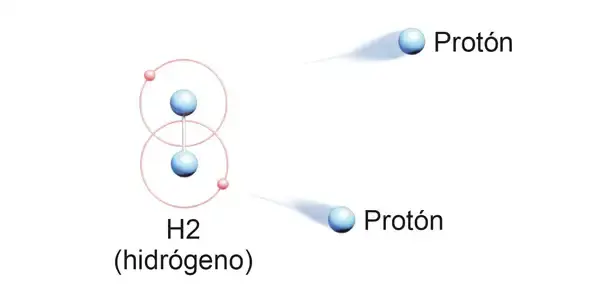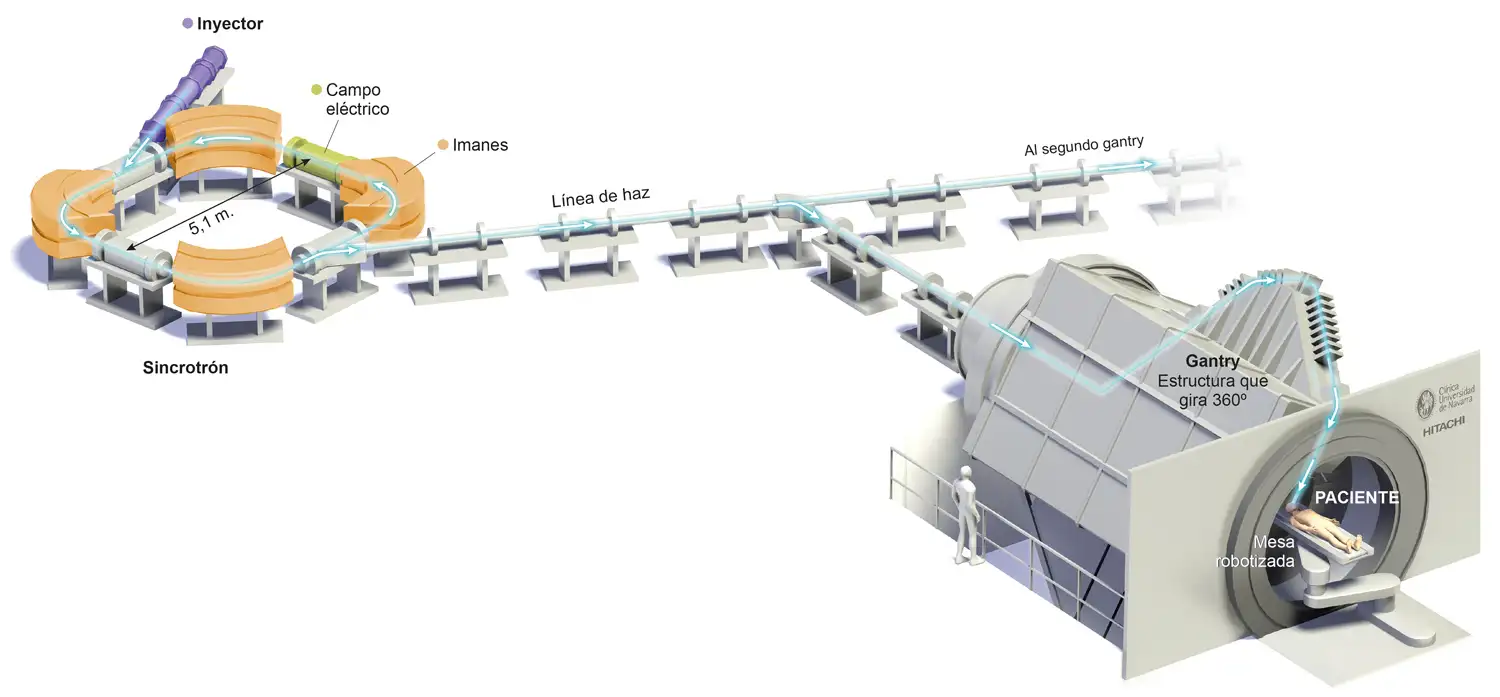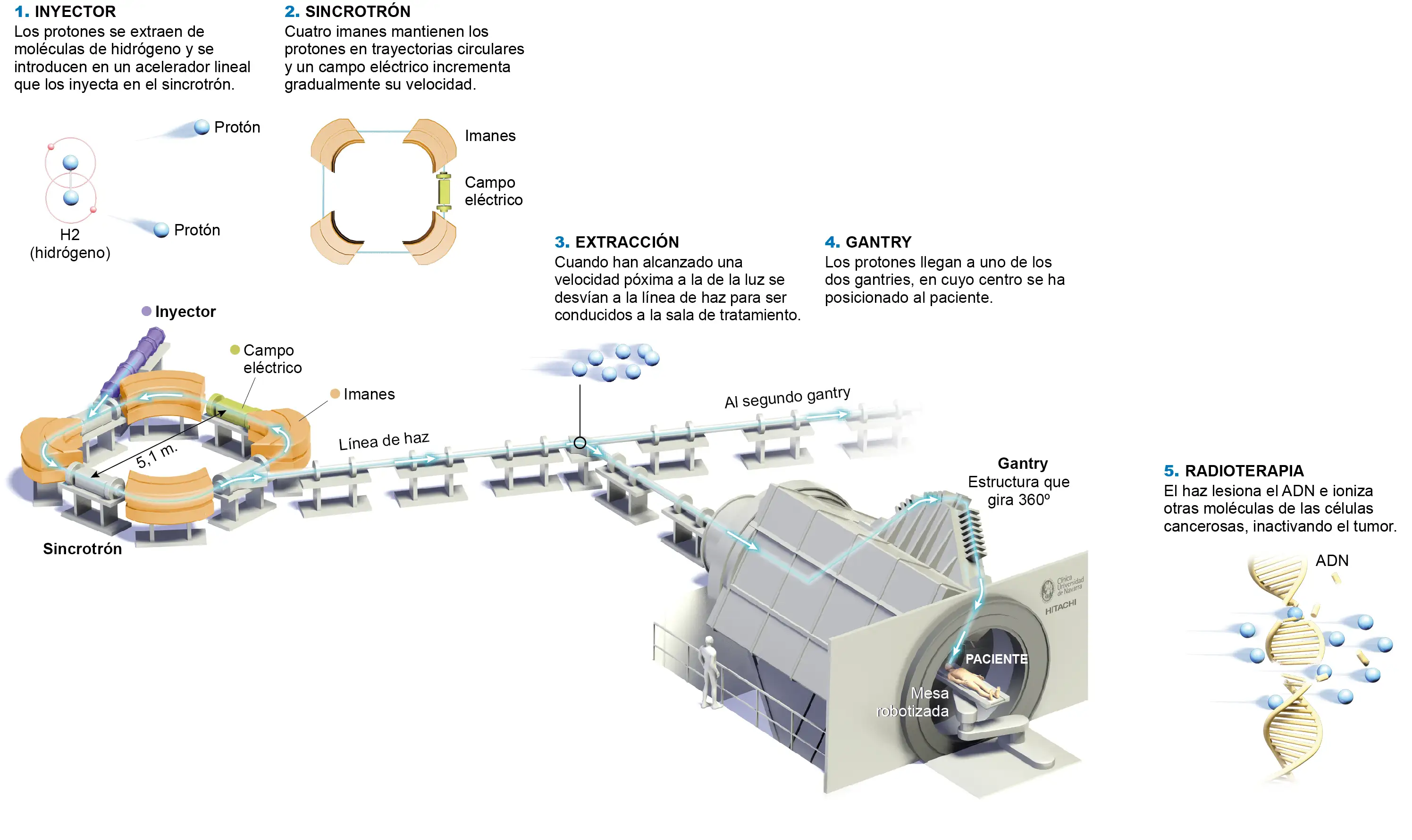Cutting edge technology of the Proton Therapy Unit
Europe’s most advanced and precise particle accelerator
Technology is key in our care and research project
Through the acquisition of this technology, the Clínica Universidad de Navarra has established a strategic alliance with Hitachi and joined the clinical and research community featuring other centers with this technology.
The Proton Therapy Unit has the same technology and draws on experience developed at hospitals such as the Mayo Clinic (at its Rochester and Phoenix locations), St. Jude Children’s Research Hospital, the MD Anderson Cancer Center and John Hopkins Medicine in the United States, and the Hokkaido University in Japan.
Compared to other technologies, the Hitachi synchrotron produces a cleaner beam formed only of protons, with no residual neutrons that may cause side effects for the patient. It also accelerates the protons to the energy level required for each patient’s individual tumor, without requiring artificial filters for the “braking” or beam degradation process.
More than 60,000 patients worldwide have been treated with this Hitachi synchrotron technology.
Do you need us to help you?
Complete this form and our specialists will contact you to discuss the case.
Advantages of synchrotron technology
Increased precision and accuracy of dose delivery, greater patient comfort and safety, and more efficient energy use.
Efficient use
The linear accelerator releases only the protons needed in each beam, thus achieving more efficient energy use, and no secondary neutrons (pollutants) are released.
Multi-energy system
This element changes the energy extremely quickly for the next treatment layer sweep: this means the radiation dose is deposited with maximum accuracy in the shortest-possible time.
360° rotation
Full gantry rotation reduces treatment time and increases precision, above all in locations where the tumor can move (lung, breast, pancreas, etc.).
Maximum field
This feature facilitates treatment of large tumor areas (e.g. craniospinal tumors and retroperitoneal sarcomas) with fewer patches.
Integrated CT
This enables verification of the patient’s positioning by making an automatic record with the planning CT. It precisely reproduces the tumor location on treatment day.
Pencil beam scanning
The tumor is scanned using this technology, which allows for enhanced dose–tumor conformity, maximizing the dose deposited in the tumor and minimizing the dose in healthy tissue.
Synchrotron, a “clean” accelerator
This device enables proton beam acceleration to the energy level required to reach each patient’s individual tumor, without the need for artificial filters to drive the “braking” process.
The Clínica’s facilities also include a system enabling proton treatment for tumors subject to respiratory movement, with a solution that is fully integrated in the instrument system. Real-time tracking is able to locate and quantify tumor movement and synchronize irradiation timing for minimal impact on healthy tissue.
Proton Therapy Unit technology

Nozzle
Protons are extracted from hydrogen molecules and introduced into a linear accelerator that injects them at low speeds.

Accelerator
This element features four magnets that keep the protons moving along circular paths. An electric field gradually increases their speed.

Beamline
When a speed close to the speed of light has been reached, the protons leave the synchrotron and are guided towards the patient.

Gantry
The area where the patient is positioned, and where protons are directed. The gantry rotates 360° so the most suitable treatment angle can be selected.



